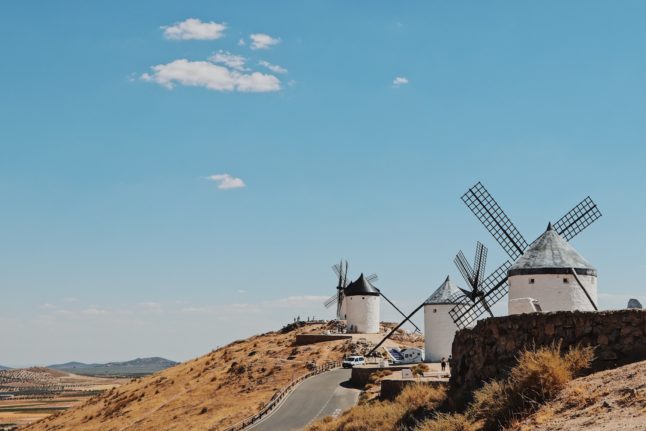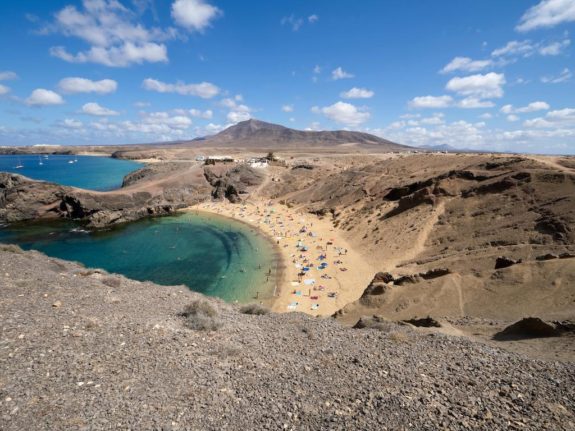Castilla-La Mancha sits in the centre of Spain with Madrid to the north, Andalusia to the south and Valencia and Murcia to the east. Its capital is the historic city of Toledo, but other main cities include Albacete, Ciudad Real and Cuenca.
Most people know Castilla-La Mancha because of its connection to one of Spain’s most famous books – Don Quixote de la Mancha – the story of a man from La Mancha who travels around the country with his trusty stead and foolish sidekick.
But despite this claim to fame, it’s one of the least-visited and least-populated regions of the country, meaning that people often don’t know much about it compared with other areas of Spain.
So, to celebrate Castilla-La Mancha Day on May 31st, we’ve found nine fascinating facts about the region to help you learn more.
It has twice been the most important region in Spain
It may not seem like it today, but Castilla-La Mancha was once the most important region in the country. The capital of the region – Toledo became the capital of Visigothic Hispania in 567 when King Atanagildo moved it from Barcelona. Then, later between 1519 and 1561, King Carlos I of Spain and King V of Germany decided that Toledo would be the capital of the Empire. In 1561, Philip II of Spain finally moved the court to Madrid.
Nine civilisations have inhabited the area of Castilla-La Mancha
The history of Castilla La Mancha dates back to around 220 BC and it has been inhabited by nine different civilisations. These include the Celts, the Carthaginians, the Romans, the Alanos, the Visigoths, the Moors, the Castilians and finally the Spaniards.
Pedro Almodóvar was born in Castilla-La Mancha
The celebrated Spanish filmmaker and director Pedro Almodóvar was born in the region of Castilla-La Mancha, more specifically in Calzada de Calatrava, located in the province of Ciudad Real. Some of his most famous films were also set and filmed in the region including Volver, The Skin I Live In (La Piel Que Habito) and The Flower of My Secret (La Flor de Mi Secreto).
55,000 hectares are for agricultural use
Castilla-La Mancha’s agricultural area is even bigger than Almeria’s sea of greenhouses, which is known as the ‘Orchard of Europe’ and produces much of the continent’s fruits and vegetables. 55,000 hectares is around the same size as the country of Andorra. Castilla-La Mancha’s main products are garlic, onions, melons, watermelons, asparagus, peppers, tomatoes, aubergines, broccoli, potatoes and lettuce. The garlic and onion grown here represent 70 and 57 percent of the total production of all of Spain, respectively. 389,565 hectares are also filled with olive trees.
READ ALSO: What is Spain’s ‘sea of plastic’ and does it affect UK food shortages?
It’s Spain’s biggest producer of the world’s most expensive spice
Castilla-La Mancha is Spain’s biggest producer of saffron, the red gold spice which is a key ingredient in Spanish paella. It’s also the most expensive spice in the world at around €3,500 per kilo. Almost two hundred thousand bright purple flowers are needed to produce one kilogram of saffron. Castilla-La Mancha grows around 90 percent of Spain’s saffron and even has a festival honouring it. The Saffron Rose Festival is celebrated every year in Consuegra and typically takes place during the last weekend in October.

It’s home to 350 volcanoes
Volcanoes may be more associated with the Canary Islands than Castilla-La Mancha, but Spain’s central region is in fact home to 350 of them. They are said to be dormant ones, however, the last one is said to have erupted 5,000 years ago, meaning technically some could still be active. You can even visit one of them, the Cerro Gordo volcano near Ciudad Real. There’s also a museum there explaining all about its violent history.
Locals have different names for the wind
Wind is a common element in Castilla-La Mancha, evident from the famous white windmills of Consuegra, which even features in Cervantes’ novel Don Quixote. It’s so abundant and so important there that locals have different names for the different types of wind. In fact, there are 12 types of wind in total. Some of these include ábrego (warm southwest wind bringing air masses laden with ocean water), matacabras (cold, strong north wind), El cierzo (a cold and dry wind from the northwest that is formed when a storm coexists in the Mediterranean) and Toledano (a wind that blows in from the west).
More than 20,000 of one of Spain’s most popular pastries are produced there every day
Miguelitos de la Roda are a popular treat from Castilla-La Mancha. They are made in the Albacete town of La Roda and are created out of fine puff pastry, filled with cream and sprinkled with icing sugar. Some are made with different varieties of filling including milk and white chocolate, but the original cream is still the most popular. According to popular history, they were invented in the 1960s. Today over 20,000 of these pastries are made there every day.
The Denomination of Origin Wines of La Mancha make up one of the largest areas of vineyards in the world
The vineyards in La Mancha stretch for a total of 158,339 hectares, making them one of the most extensive in the whole world. Airen and Macabeo are the two main grape varieties that grow here, but they also blend Tempranillo, Cabernet Sauvignon, Garnacha, Garnacha Tintorera, Monastrell, Syrah, and Bobal. Winemaking in Castilla-La Mancha goes back in time to the Reconquest and the region even supplied the Spanish courts with wines in the 16th and 17th centuries.



 Please whitelist us to continue reading.
Please whitelist us to continue reading.
Member comments